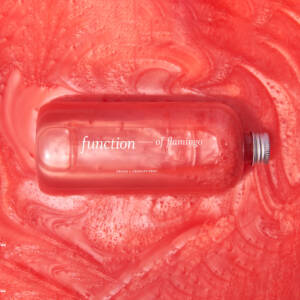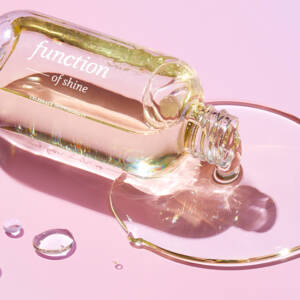When it comes to thick hair vs. thin hair, which hair texture is more high maintenance? If you have a head of thick, dense hair you’ve probably spent hours keeping your voluminous locks under control. If you have thin hair, you’ve also spent lots of times attempting to add body and shape to your sometimes lifeless-looking locks.
We’re here to tell you that both come with pros and cons that can be managed with proper haircare knowledge and styling products. Let’s begin the journey of understanding your unique hair structure by showing you how to measure the thickness of your hair. Then, we’ll share top tips for caring for your hair.
Determining Thickness: Thick Hair vs. Thin Hair
When discussing hair thickness, what we’re really referring to are several factors: the individual strands themselves, the number of hairs on your head, and how closely your hair grows together. If you don’t know what type of hair you have, the easiest way to determine this is to examine a single strand of hair.
Fine hair will feel very slippery and sparse, like the thinnest piece of sewing thread you’ve ever seen or felt. Thicker hair strands have much more girth and should be more visible when placed on a flat surface. Thick strands also have more wire-like qualities and tend to be more resistant to change than other hair structure types.
While the thickness of your hair refers to the size of your individual hair strands, the amount of hairs on your head can also indicate whether your hair appears thick, thin, or somewhere in between. For instance, having thin hair doesn’t mean that your actual strands are thinner. It just means you have a lower number of hairs on your head.
The average human has anywhere from 80,000 to 120,000 hairs (and sheds about 100 strands every day). However, this doesn’t always correlate with actual hair thickness. A fine-haired person with hundreds of thousands of individual hair strands may appear to have hair that’s just as thick as someone with coarse hair who is experiencing hair loss and thus has fewer strands. The thickness of your hair strands can also vary depending on where on your head they’re located.
Testing Hair Density
Another way to understand thick hair vs. thin hair is hair density. Density of the hair is determined by the number of hair strands per square inch — basically how close together your hair follicles are. Someone with low-density hair will experience more spaced-out hair growth than someone with high-density hair who has more tightly packed strands.
There are many quick ways to judge the density of your locks without using a microscope or magnifying glass. The first is by examining your scalp. Press down the sides of your hair so that it lies flat. Then, analyze your hair part. If you can see a significant amount of skin where your hair parts, then you probably have low-density hair. If barely any skin is exposed, you likely have high-density hair.
Another way to test your hair density is to tie your hair in a ponytail and look at how wide the hair expands. Someone with low density will have a thinner, less expansive ponytail whereas someone with high-density hair will have a much thicker ponytail. Since people with straight hair tend to have more slender-looking ponytails, straight locks tend to be thinner and less dense. Alternatively, those with coily or curly hair tend to have thicker, higher-density hair.
Tips on Caring for Thick Hair
If you’re the proud owner of densely voluminous locks, you’ve probably had trying times attempting to tame your mane. Having thick, sturdy strands can come with unruly frizz, which can make hair look inflated to twice its actual size — probably not the look you’re going for. Here are some tips for managing dense locks.
Use a Custom Hair Mask
Hair masks are made to reach deeper levels of thick hair. Because they’re meant to leave on for longer than traditional conditioners, hair masks can more effectively penetrate your cuticles and reach the inner cortex of your strands. This may help reduce damage, breakage, and dryness that can contribute to frizz.
Function of Beauty’s custom hair mask is chock-full of nourishing ingredients like argan oil, Japanese sake extract, and jojoba ester oil that can help reduce the appearance of frizzy hair and improve moisture. Simply apply this mask once a week in place of your regular conditioner and leave it on for the recommended time. Wash it out to reveal softer, smoother-looking locks that complement the brilliant thickness of your mane.
Pro Tip: Try these DIY hair masks with 4 ingredients or less
Thin It Out and Comb It Down
Finding strategic ways to take weight off your hair without compromising length can help you take control of your thick locks. The next time you go to a hairstylist, ask them to thin out or add layers to your tresses. Layers can reduce bulkiness and add movement without taking away length. Likewise, thinning out your ends can help minimize thickness and reduce excess volume.
Another tip for handling dense hair is cutting down on drying practices. Your hair is at its most vulnerable after you shower. As such, immediately brushing it out or drying it with a roughly textured towel can cause breakage and increase frizz. The best thing you can do for post-shower thick hair is to lightly pat it with a soft microfiber towel and run a wide-tooth comb through it to prevent tangles.
Pro Tip: Learn how to achieve the perfect air-dried look
Tricks for Handling Thin Hair
Although thin hair usually doesn’t have to deal with annoying frizz and tangles, it does struggle to achieve volume. Stubbornly sparse strands can translate to dreaded flat hair. But with the right tips and haircare products, getting more volume in your life can be possible.
Customize Your Shampoo and Conditioner
Start by taking advantage of customized shampoo and conditioner formulas made to achieve hair goals like volume and strength to help you achieve the look of fuller hair. Function of Beauty’s shampoo and conditioner can be customized for your unique hair type. If you want to reduce the appearance of thin hair, take this hair quiz to build your perfect formula that addresses your specific hair type.
Pro Tip: Figure out what your hair goals should be
Style Your Locks Smarter
Those with straighter and flatter hair tend to have thinner locks, so you might turn to styling tools like curling irons and blow dryers to add body. But before turning up the heat, be sure to apply thermal protection to counteract any potential heat damage.
Function of Beauty’s custom hair serum is lightweight so it won’t weigh down hair, tames wispy locks, and adds smoothness. It can also:
- Improve detangling by 75%
- Thermally protect up to 400 degrees
- Increase shine 26 times more than untreated hair
Pro Tip: Explore more hacks for achieving thicker-looking hair
Thick Hair vs. Thin Hair: Either Way, You Have Options
Whether you have thick hair or thin hair, you can start implementing some of our tricks for improving the look and feel of your hair type. If you have thick hair, use a moisturizing hair mask and consider asking your hairstylist to add strategic layers to reduce bulk. If you have thin hair, getting a customized shampoo and conditioner and using heat-protecting serum while you style can go a long way to giving you fuller-looking locks.
No more battling over who has it worse: thick hair vs. thin hair. Instead, find ways to maximize the benefits of your hair thickness and take advantage of products that complement the look of your unique hair density.





